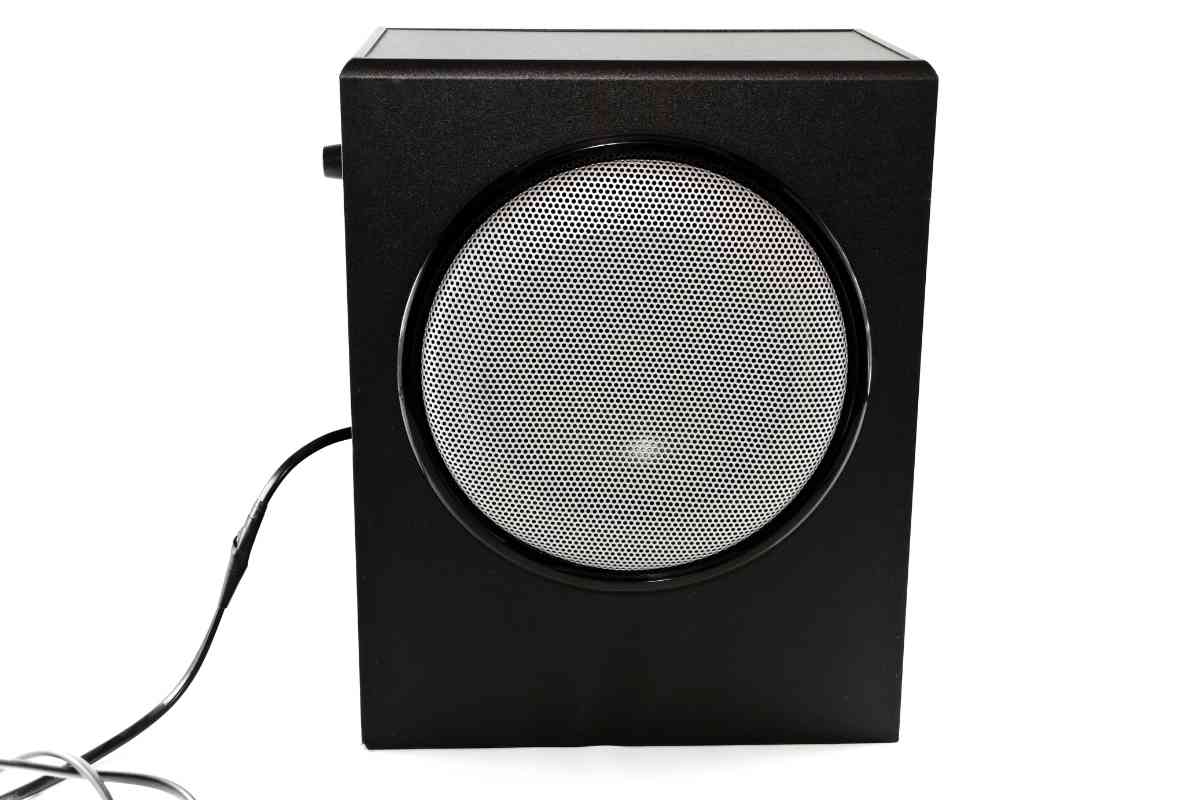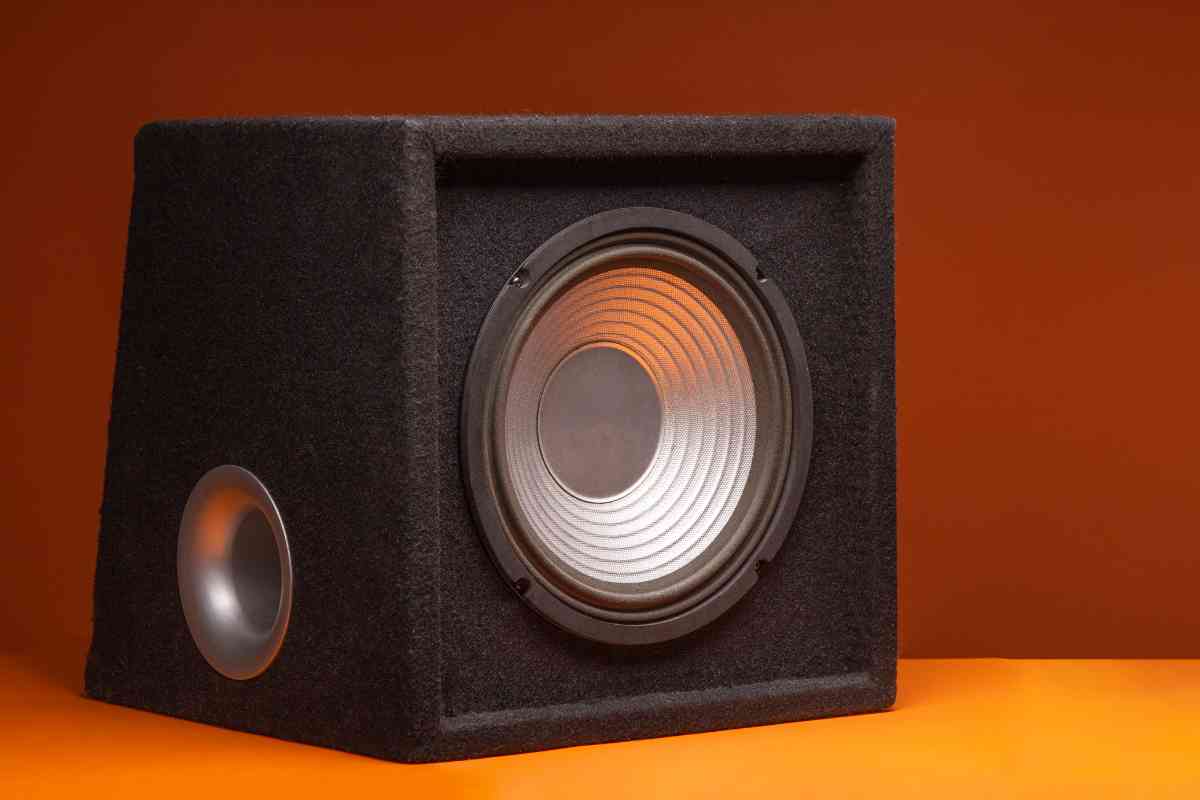Enjoying music in the car while embarking on a road trip forms unforgettable memories.
Including a subwoofer in your car audio system will elevate the sound quality, particularly by enriching the bass.
Yet, enhancing your car audio with subwoofers usually poses a challenge without adding an amplifier. But can I use a subwoofer without an amplifier in a car?
In this article, we will answer this question and cover everything you need to know about installing a subwoofer in a car without an amplifier.
Let’s get started!
Can I Use A Subwoofer Without Amplifiers In A Car?
The answer is yes. Establishing a connection between a subwoofer and your car stereo without an amplifier is feasible.
However, this arrangement often leads to declining sound quality and increased audio distortion. Sometimes, the subwoofer fails to operate altogether due to insufficient power supply.
The most practical solution to address this challenge effectively is acquiring an active subwoofer with a built-in amplifier.
This subwoofer does not need an external amplifier because it enhances sound quality. This is also because of its integrated amplification capabilities.
On the contrary, passive subwoofers lack an integrated amplifier within their design. Passive subwoofers will give off distorted sounds, unlike the actual bass sounds.
This subwoofer requires an additional amplifier to function optimally. The amplifier will provide power for the subwoofer.
How To Use A Subwoofer Without Amplifier In A Car?

You can connect your subwoofer directly to your car stereo with an Amplifier. However, this connection will depend on whether you have a passive or powered subwoofer.
It’s important to note that you won’t have as much power as when you use an Amplifier. You may also end up blowing the device that houses the pre-amp output.
Here are the steps to take to connect a subwoofer without an amplifier:
Connecting an Active Subwoofer
Using an Active Subwoofer is the best bet if you do not have Amplifiers. Here is how to install one in your car:
Step 1: Gather the Necessary Materials
Gather appropriate materials, including:
- Spanner,
- Hammer,
- Tester,
- Screws, and
- Pliers.
Step 2: Power Off the System
Disconnect the electrical system by detaching the negative battery cable from the battery’s negative terminal to avoid any electrical shock since a subwoofer is an electrical component.
Step 3: Turn off the Infotainment Components
Disconnect all lines connected to the infotainment system to prevent accidental shocks while accessing the rear panel.
Step 4: Remove the Fuse
Remove the fuse to facilitate the connection between the subwoofer and the main power supply.
Step 5: Detach the Stereo from the Dashboard
Use a flathead screwdriver to remove the stereo from the dashboard. This will allow you to access the wiring harness and stereo or rear panel outlets. You can also use the rear deck speakers instead.
Step 6: Attach an Adapter to the Stereo Wires
Attach an adapter that serves as a power outlet for the subwoofer. Combining the adapter with the stereo wiring will provide the final power source, allowing for a connection through a single cable.
Step 7: Place the Subwoofer
Choose a suitable location in your car for the subwoofer. Make sure it can connect properly to the car stereo. Usually, the right rear panel works well.
Step 8: Connect the Low-Frequency Effects
Connect the subwoofer’s input port to the Low-Frequency Effects (LFE) output. Look for ports labeled “subwoofer” or “sub-out.”
Avoid running RCA and power cables together because it can affect the sound quality.
If you can’t find the LFE output or the subwoofer doesn’t have the right input, try connecting the left and right stereo connectors (R and L).
If you’re using cables, plug them into the L or R ports on the subwoofer box.
Follow the below steps to ensure a safe connection:
- Ensure proper polarity by connecting the negative pole to the negative and the positive to the positive terminals.
- Use a tester to check the flow of electrical current and ensure that the crossover and all connections function smoothly.
- Place the subwoofer back into its holding, ensuring a direct metal-to-metal connection without any paint interference between the car body and the wire.
- At this point, all connections should be made. Place the previously removed ground battery wire on the battery’s negative terminal and screw it back securely for a stable connection.
- Grounding: Connect the ground wire to the vehicle’s chassis, securely attaching it to a metal bolt or bare metal surface. Remove any paint before making the connection.
Step 10: Test Your Audio System
Check your audio system, including the subwoofer, to ensure everything works correctly.
Connecting a Passive Subwoofer
To connect a passive subwoofer to your car, follow these steps:
Step 1: Disconnect the Battery and Remove the Speakers
First, disconnect the car battery completely. Then, remove the speaker from its mounting dock to access the wiring. This could be the wires behind your stereo or rear deck speakers.
Step 2: Mount the Subwoofer
Find a suitable spot in your car to mount the subwoofer. Ensure there are existing speaker wires in that area.
Step 3: Re-route the Stereo and Complete the Connection
Re-route the stereo and power supply cables to the subwoofer and connect them. If your audio system has a dedicated outlet for the subwoofer, connect it as well.
Connecting the subwoofer to the rear speaker output won’t give you strong bass. Instead, it will provide a lower bass frequency than the other speakers.
If there are no existing wires, you’ll need to run wires from the head unit harness, similar to how you would for the car speakers.
Ensure the ground wire is securely connected to the car’s chassis by attaching it to a metal bolt or bare metal surface after removing any paint.
Step 4: Reconnect the Battery
Turn down the built-in amplifier gain on the subwoofer and reattach the car’s battery terminal.
Step 5: Test Your Audio System
Check your audio system to ensure everything is functioning correctly, including the subwoofer.
Frequently Asked Questions
Can You Use Car Audio Without a Subwoofer?
Yes, you can use car audio without a subwoofer. Most factory car audio systems work without a subwoofer.
While the sound quality is decent, you won’t get the same bass level as a subwoofer. If you want more bass, you can add a subwoofer later on.
What Are the Implications of Using a Subwoofer in a Car Without an Amplifier?
Utilizing a subwoofer in a car without an amplifier can lead to undesirable consequences.
The subwoofer will not receive an adequate power supply without amplification. This will hinder its ability to reproduce low-frequency sound accurately.
As a result, the bass won’t sound good, the audio may also sound unclear, and your listening experience won’t be as enjoyable.
Additionally, the absence of amplification can strain the subwoofer and potentially cause damage, as it may attempt to draw excessive power from the car’s audio source.
Which Subwoofer Type Can I Wire Directly To A Head Unit?
Without an external amplifier, you can wire active subwoofers directly to a head unit. Active subwoofers are smaller and less powerful than larger ones, but they still provide decent bass.
Is It Possible to Bypass the Amplifier Need and Still Enjoy Quality Bass From a Subwoofer?
Unfortunately, it is impossible to skip using amplifiers if you want good bass quality from a subwoofer in a car.
Amplifiers strengthen the audio signals before reaching the subwoofer, which is essential for getting deep and powerful bass.
Attempting to bypass amplifiers may result in underpowered and distorted bass, undermining the immersive audio experience typically associated with a subwoofer.
Can I Compensate for the Lack of an Amplifier by Increasing the Volume of My Car Stereo?
Boosting the volume on your car stereo to compensate for the absence of an amplifier is an ineffective solution.
While increasing the volume may amplify the overall sound output, it does not address the specific power requirements and signal processing necessary for optimal subwoofer performance.
Dedicated amplifiers best handle the task of amplifying and refining low-frequency signals. They are designed to provide the power and precision a subwoofer demands.
Are There Any Alternatives to Using Amplifiers With a Subwoofer in a Car?
Yes, alternative options exist to incorporate a subwoofer in your car audio system without relying solely on amplifiers.
One popular alternative is utilizing powered subwoofers. They’re also known as active subwoofers. They come equipped with built-in amplifiers.
These self-amplified subwoofers simplify installation and optimize performance by combining the amplification and subwoofer components into a single unit.
Powered subwoofers eliminate the need for separate amplifiers and still provide the power and control for an enhanced bass experience in your car.
What Is the Cost to Install a Subwoofer in a Car Without an Amplifier?
The cost of installing a subwoofer in a car without an amplifier varies. A basic installation, including a powered subwoofer connected to the head unit, can cost around $50 to $150.
The cost may be higher if additional modifications are needed for your car’s audio system.
Related:

